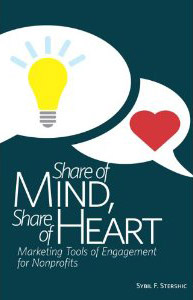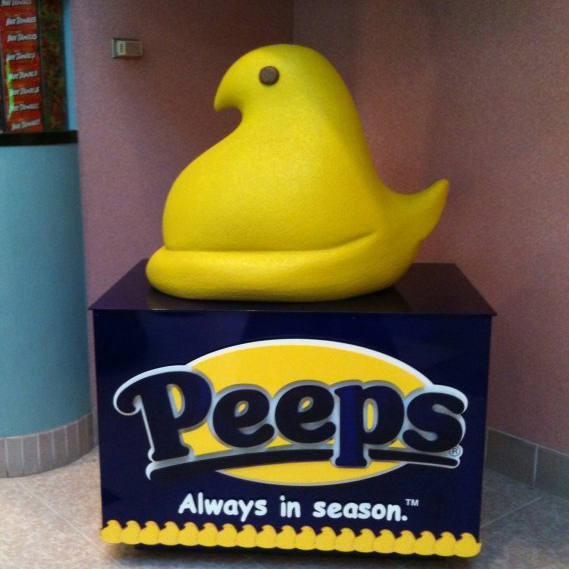Although I work primarily in the services sector, I couldn’t pass up the opportunity to showcase Just Born, manufacturer of “quality confections” including well known brands Peeps®, Mike & Ike®, Hot Tamales®, and Peanut Chews®. The company made headlines in the business press and blogosphere last year when it sent one of its sales teams to Fargo ND for falling just short of its sales goals.
Just Born is based in the Lehigh Valley, PA area where I reside, so I’m familiar with the company and its commitment to the local community. The business was founded in 1923 and now employs more than 500 associates. In response to the growing popularity of its brands, including the cult status of its marshmallow Peeps®, the company will soon open its second branded retail store.
The more I learn about Just Born from a business perspective, the more I continue to be impressed. So I sat down with co-CEO Ross Born to gain more insight into the company’s operating philosophy and culture.
 QSM: Just Born’s vision is “Continuing as a family-owned confectionery company, our commitment is to be a market-driven, quality business enhancing our reputation as a progressive, ethical and respected employer, manufacturer, marketer, and member of the community.” I notice that you list your role as an employer first.
QSM: Just Born’s vision is “Continuing as a family-owned confectionery company, our commitment is to be a market-driven, quality business enhancing our reputation as a progressive, ethical and respected employer, manufacturer, marketer, and member of the community.” I notice that you list your role as an employer first.
Ross Born: If you have the right people, they’re number one. You take care of them, they’ll take care of your customers. They’ll make sure the product is right; they’ll make sure they’re treating the customers right. We look for people that really care about what we do, that care about our brands. Just Born’s two most important assets are our brands and our people who nurture the brands.
QSM: When I read your company’s philosophy, I was struck by the frequent mention of employee engagement-related statements such as:
- We believe vision, compassion, courage, and integrity are the cornerstones upon which we build each day and each endeavor.
- We believe in building and sustaining an environment where people, ideas, and creativity can flourish.
- We believe in promoting a healthy and safe work environment.
- We believe trust is the foundation of all personal, interpersonal, and organizational achievement, and the building and maintaining of trust is our top priority.
- We believe great things happen when everyday courtesy, kindness, and humor are woven into all our personal and professional interactions.
- We believe in treating others as we would like to be treated, creating a common connection from co-worker to customer to consumer to community.
- We believe in nurturing respectful relationships with one another and encouraging the best in each other.
Caring about people is really important at Just Born, isn’t it?
Ross: Let me respond first by sharing an experience I had when talking to a group of middle school students. They asked me what I do at work, what are the important things I do. They were surprised when I told them ‘I say hello to people. I know people’s names.’ They were expecting me to talk about the reports I read, the meetings I go to, and the decisions that needed to be made. I do all those things, but the most important is I care about people.
It’s not enough to say ‘we care about our people,’ they have to know that they’re cared about. I remember visiting a company that was decorated with motivational posters. As I was reading some of them, an employee walking past me whispered, ‘Don’t believe everything you read.’
Part of caring is giving people the right tools and in the right environment. It’s also about doing the right thing. For example, we had a situation with a water main break that occurred as a result of construction on someone else’s property nearby. We had to send people home and lost two days of production, but we paid those scheduled to work those days. It wasn’t a matter of ‘let’s check out our insurance coverage first.’ I didn’t want our people to wait until we got paid by the insurance company. Even though the situation was out of our control, it was our responsibility to ensure our people were taken care of. That’s an example of putting actions to our words that we care about our people. If we had waited to see what the insurance company would do, that would have sent a message that we care more about money than our people.
QSM: Another part of your philosophy states, “We believe there is much to learn from one another and much to teach one another.” Tell us more about how you live this philosophy.
Ross: We provide a lot of training and cross-training. One of our ongoing in-house programs is our High Performance Leadership Development training that emphasizes effective decision making, problem-solving, communication and coaching skills, along with continuous improvement tools. More than 140 people have gone through the program so far. We’ll soon be introducing the program for everyone, including all our production people. Participants in this training apply what they learn in individual and group projects that they come up with, and the projects have to be of measurable benefit.
QSM: I know Just Born is also committed to the local community.
Ross: We care about our community; having a strong community is essential for a strong business. We encourage volunteerism – giving back to the community. Volunteering builds character in addition to promoting camaraderie among our associates. More than half of our associates are active, regular volunteers in projects ranging from packing meals at the food bank (very popular) to cleaning the kennels at an animal rescue shelter. Community projects involve associates from all parts of our business, and some are team based. Everyone of our associates is given 24 hours per year of paid time to volunteer, and a significant majority of our associates also volunteer on their own time.
At Just Born we believe it’s possible to be socially responsible while maintaining a growing, profitable candy business. We’re doing it!
QSM: Now that’s what I call a sweet approach where everyone benefits. Thanks for sharing, Ross!




 QSM: Just Born’s vision is “Continuing as a family-owned confectionery company, our commitment is to be a market-driven, quality business enhancing our reputation as a progressive, ethical and respected employer, manufacturer, marketer, and member of the community.” I notice that you list your role as an employer first.
QSM: Just Born’s vision is “Continuing as a family-owned confectionery company, our commitment is to be a market-driven, quality business enhancing our reputation as a progressive, ethical and respected employer, manufacturer, marketer, and member of the community.” I notice that you list your role as an employer first.
